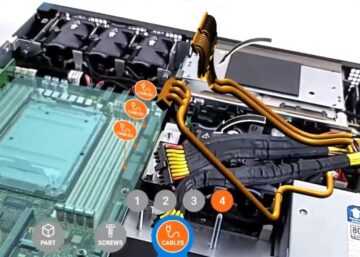Right to Repair refers to proposed legislation that would make it realistic for any repair shop or even an average consumer to fix an electronic device. Right now, it is technically legal to fix your own phone or laptop, but as Thorin Klosowski in The New York Times Wirecutter points out, something being legal doesn’t necessarily mean it’s possible. In recent history, many electronics manufacturers have kept the necessary tools and information to repair their products under close guard. In order for someone to replace a battery in a smartphone, for instance, they need access to diagnostics, instructions (possibly using augmented reality), parts and tools.
What We Need to Make Right to Repair Work
Firstly, products have to be designed to be repaired. You have to be able to open the outer casing without breaking it, for example. Microsoft improved the repairability of their Surface Laptop 3 simply by rearranging a few of the inner parts, proving that such a move doesn’t necessarily mean a design overhaul. In addition, as consumers, we’ll need to shift our approach to shopping for products, taking the feasibility of repair into consideration. To this end, France has developed a repairability index to help people identify how easily a product can be fixed. Next, we need the tools to make fixes practical for the average repair shop or end-user. That’s where augmented reality (AR) comes in.
How Augmented Reality Can Make Swapping Out Parts Easier
Most of us would be intimidated by the idea of opening up a laptop to replace a battery, but imagine you had an expert standing over your shoulder, patiently walking you through each step. That’s what AR technology can do. It can overlay digital information onto your real device, giving you step-by-step instructions at your own pace, without the need to shift your attention between written instructions and the device. There are a lot of advantages to this approach:
- It’s less expensive for the end-user who doesn’t have to buy a new device.
- It leads to greater accuracy in repairs than written or even video instructions can.
- It’s low cost to the manufacturer, who doesn’t have to use human technicians or publish and update written manuals
- It’s better for the environment, keeping more electronics in use and out of the landfill.
The best thing is, this technology already exists in an accessible way. You can use your smartphone to walk you through replacing a cracked screen or battery. Here’s an app, being considered by several major tech companies, that shows how AR instruction can work: KAR on the App Store; KAR on Google Play.
It’s not limited to electronics. AR repair could realistically extend the life of everything from your toaster to your vehicle, reducing costs for manufacturers and consumers and producing less waste.



